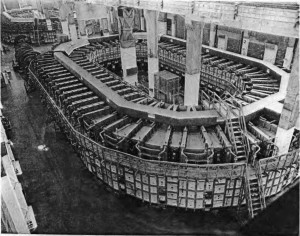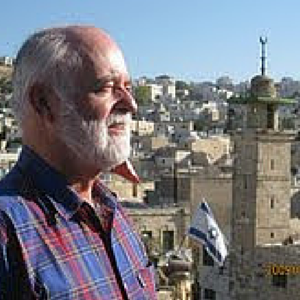
While going through my Dad’s estate last year, I came across a strange artifact I had never seen before—a large, carefully crafted, but empty, wooden spool for wire. It was dated “May ‘44”, and its gross, tare and net weights were measured and recorded by hand, as if its wire had been unusually valuable. Suddenly, one of my Dad’s stories came to life. The wire likely was silver.
When I was three days old, Dad was recruited as an engineer for a secret project. His job was helping separate isotopes of uranium. Early in 1944, he drove Mom and I from Berkeley, California, to Oak Ridge, Tennessee. His group was building an electromagnet the size of a “football field.”
Due to the war, copper wire was in short supply. Silver is an even better conductor. So they asked the federal government, “How much silver is in Fort Knox?”
“15,000 tons.”
“May we borrow it, all of it?”
“Yes.”
Dad was flabbergasted. He asked one of the scientists, “What in God’s name are we working on, that is that important?”
“Well, that’s classified. But I can tell you this much. Go to the library, find a (certain) physics textbook, and read a (certain) page.”
Dad found the textbook, and read the page. It discussed the very recent discovery in Germany (1939, the same year Hitler invaded Poland) of nuclear fission. The last two sentences read: “Some physicists believe this discovery may be used to construct an extremely powerful new weapon. If you wake up one morning and find half the world has disappeared, you will know they were right.”
In the history of warfare technology, every new weapon, starting with the spear, has rapidly spread to all opposing groups. The result is that warfare has, century by century, become more and more deadly and indiscriminate, and less and less justifiable, even to us who believed there was such a thing as a just war. If we can make half the world disappear, then the other half, and humanity itself, is at risk of disappearing also.
I think of weapons scientists as “apprentice sorcerers” because they are almost never able to get their genies back in their bottles. Perhaps a course on the history and effects of weapons development should be required of all students, especially sorcerers’ apprentices.
I know many of the scientists were motivated by fear of a Nazi nuclear bomb. They did not anticipate the domination of the military-industrial complex, or the emergence of the American empire. And they did not fully understand the consequences of a nuclear war until Carl Sagan’s work on “nuclear winter,” about 1980. After WWII, all of them (except for Edward Teller) refused to work on Dept of War/Dept of Defense projects. They focused on particle accelerators (and won about nine Nobel Prizes in particle physics).
Dad continued working at the “Rad Lab” (Radiation Laboratory, renamed the Lawrence Berkeley Lab after E O Lawrence died suddenly in 1960) until he retired in 1976. Twenty years later I finally asked him how he felt about working on what turned out to be the atomic bomb. He did not say much (but he was always a man of very few words, after losing his mother at age one).
I majored in physics at UC Berkeley—that was the subject I found most logical and interesting. After the Peace Corps, I decided I wanted to teach high school physics. When we got to the chapter on nuclear energy, including bombs, I showed a documentary on Hiroshima. This was 1972, when discussion of nuclear weapons was still taboo. My dept chair, who spent most of WWII as a prisoner of war in Nazi Germany, demanded I be fired. To their credit, the fathers of the Catholic school in which I taught declined to fire me, and instead asked me to create and teach a course on how to think about war (i.e. Vietnam). That class has evolved over the decades, but still goes on.









I love your story-telling, Lorin. Thank you for sharing this. All of the silver in Fort Knox? Amazing.
That’s how my Dad told me the story. I don’t know how much silver was actually in Fort Knox.
There are a number of sources affirming that they borrowed 14,700 tons. It took 25 years to get all the silver back to Fort Knox.
I found this most interesting. Thank you for sending it to me Lorin.
Alice
Ironically, artists at the Disney studios in Los Angeles were working on the ‘Sorcerer’s Apprentice’ sequence (in Fantasia) even as Lawrence and others were developing the bomb in Berkeley. A failure to communicate…
Incredible story Lorin. Thank you for the passionate and tireless work you do towards a non-violent world. We’re all indebted to you.
Powerful telling of a slice of your family history, Lorin – thanks for sharing.
Lorin, I have finally read this. What an incredible story of both your Dad!s and your experience. Thank you for sharing!
I am in awe of your work on nonviolence in our world as it feels that we are often moving in an opposite direction. Thank you again.